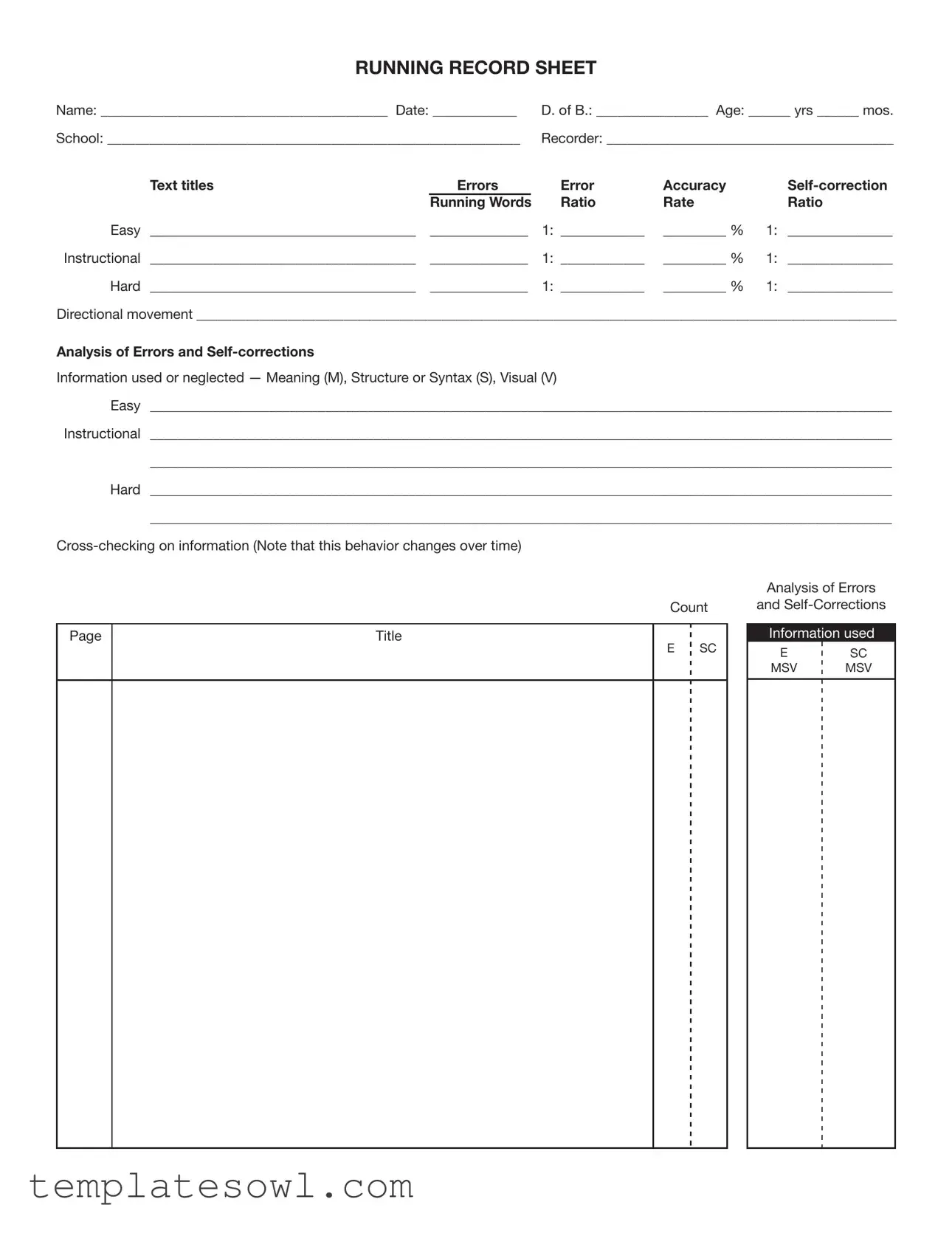What is the purpose of the Running Record Sheet form?
The Running Record Sheet form is designed to allow educators to assess a student's reading abilities. By recording specific details such as errors, self-corrections, and overall reading fluency, teachers can gain valuable insights into how a student interacts with text. This assessment helps in identifying a student's reading level, strengths, and areas that may need improvement, enabling tailored instructional strategies for more effective learning.
How do I interpret the error accuracy and self-correction ratios on the Running Record Sheet?
error accuracy ratio indicates the percentage of words correctly read by a student during the assessment. A higher percentage means the student is less likely to struggle with that text. The self-correction ratio represents the number of times a student corrected themselves while reading. A high self-correction ratio suggests that the student is engaged with the text and possesses awareness of their reading errors. These metrics work together to provide a clearer picture of the student’s reading proficiency.
What information do I need to fill out on the Running Record Sheet?
To complete the Running Record Sheet, you need to gather basic details about the student, including their name, date, date of birth, age, school, and the recorder’s name. You'll also need to fill in specific sections related to the text being read, including the title, the number of errors, accuracy ratio, and self-correction measures. These fields will capture critical data, which allows you to analyze the student's reading behavior effectively.
How can I use the analysis of errors section on the form?
The analysis of errors section is a crucial component for understanding the nature of a student’s reading difficulties. Utilize the space provided to categorize errors based on meaning, structure, or visual inaccuracies. This information indicates whether the errors were related to comprehension, grammar, or recognition of words. By closely examining these aspects, you can better tailor your teaching approach and address specific needs of the student, thereby fostering improvements in their reading skills.


